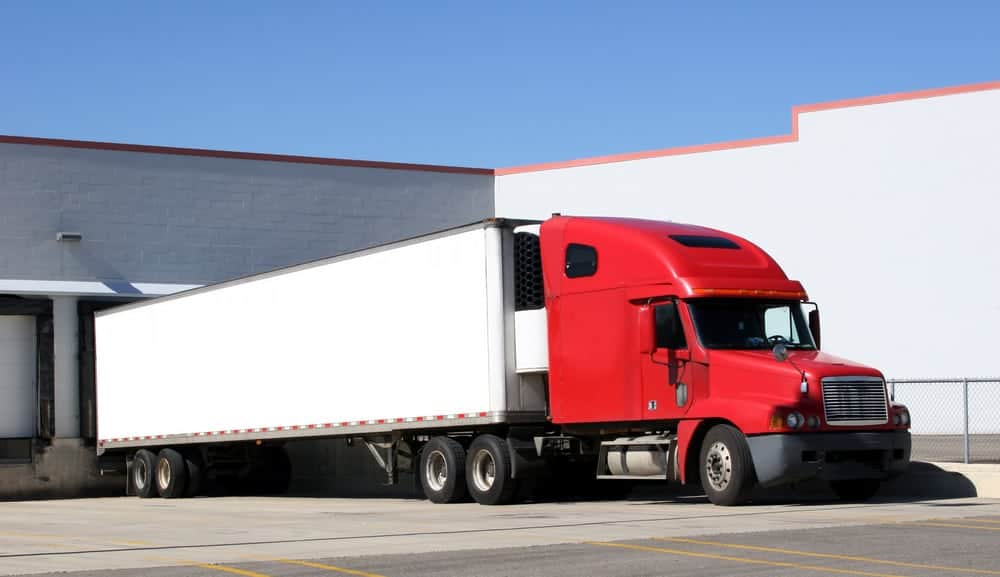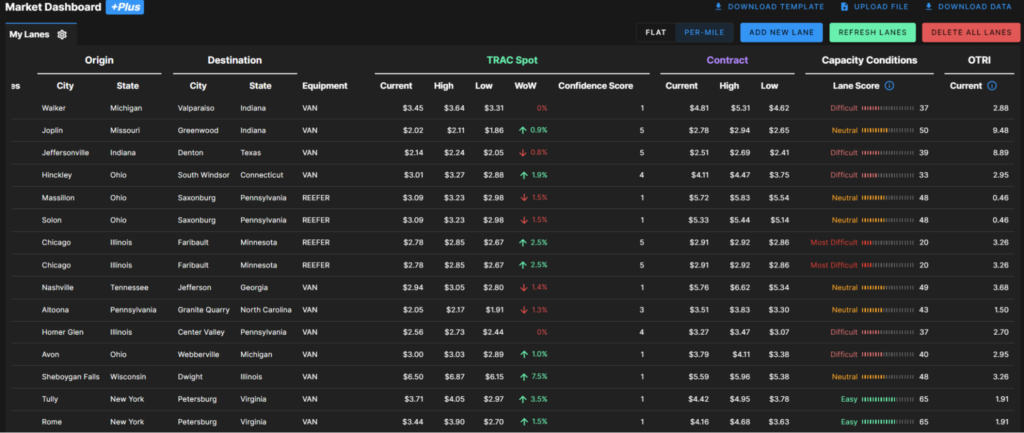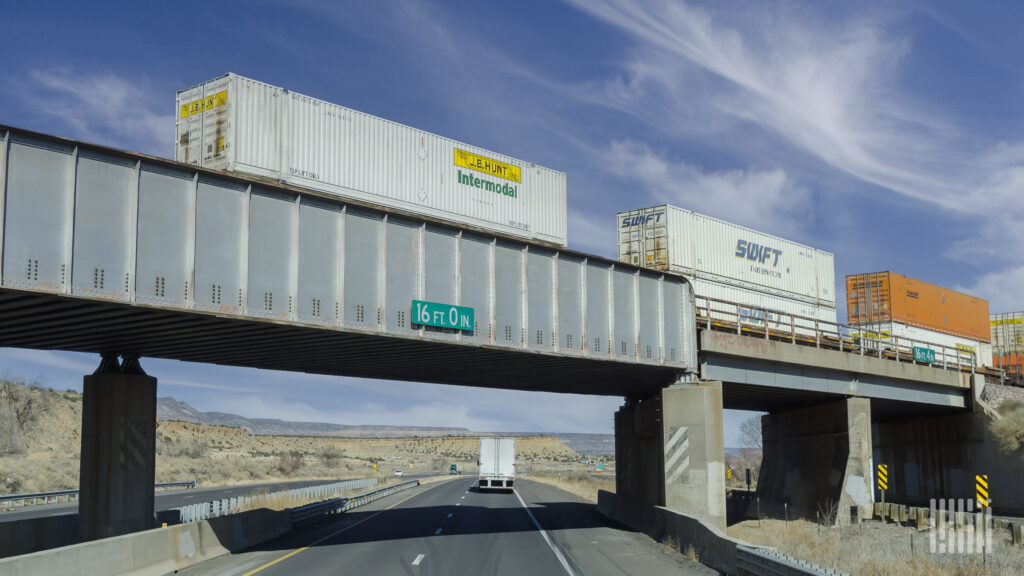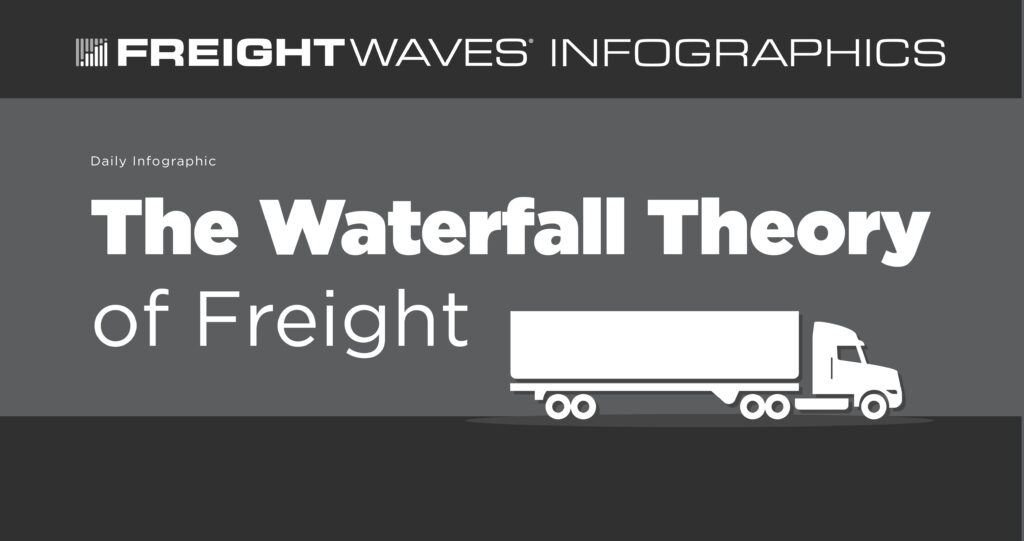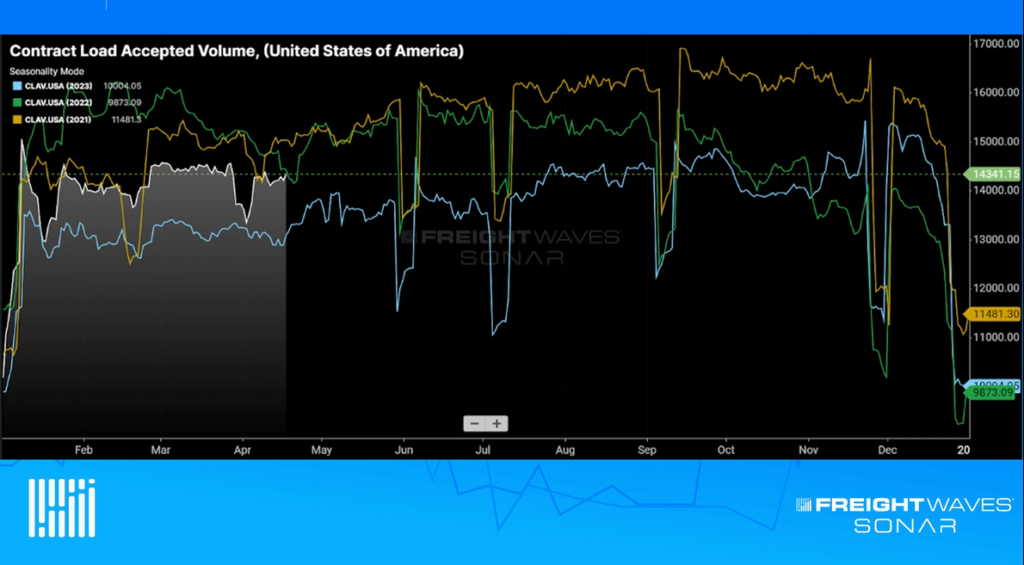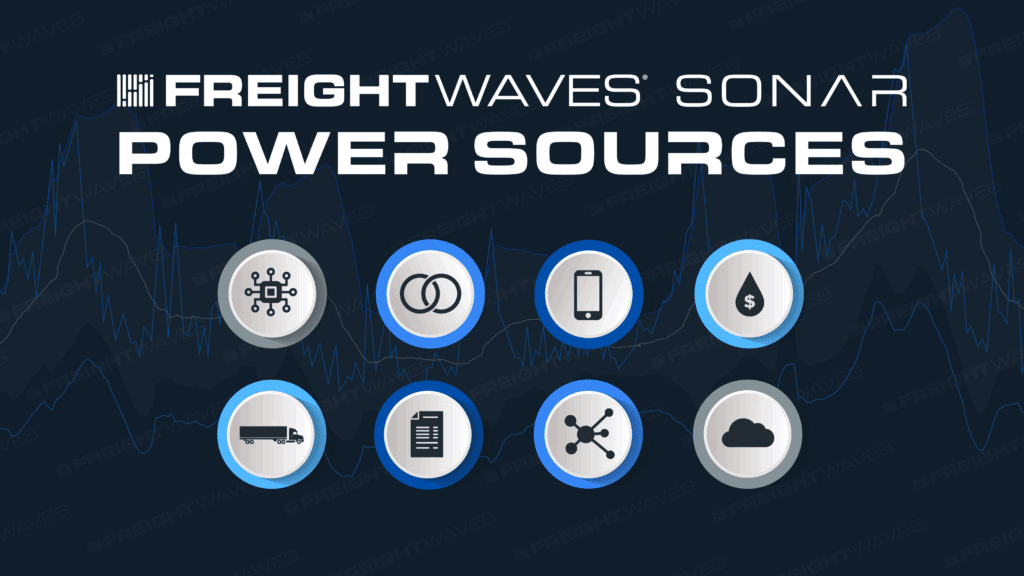Tender rejections occur when a contracted carrier rejects an electronic load request from a shipper customer. FreightWaves SONAR measures the former via the outbound tender reject index (OTRI).
Carriers really only have two reasons for rejecting a contracted load. One, they do not have available capacity to service the request. Or, two, there are more attractive, higher-paying alternative loads available in the spot market.
Either reason, if true on a broad, nationwide basis in the trucking industry, likely means that capacity is tightening and thus pricing power will be shifting to the carriers (on the margin at least).
Tender rejections and spot rates tend to be highly positively correlated. If tender rejections are low, it is very likely that spot rates will be low as well, and vice versa. This is precisely the case now (as of May 2020) with spot rates of $1.28 per mile (DATVF.VNU) – below our estimate of operating cost per mile and tender rejections at 3.5%. This is exactly what one would expect in the midst of the deepest recession in the U.S. since the Great Depression.
Nonetheless, the freight economy is incredibly dynamic and things are not that simple because the outlook is improving on the margin for the trucking industry and the freight economy because of generous unemployment benefits, a reopening of the U.S. economy and unparalleled monetary and fiscal stimulus. The trucking industry is similar to the energy industry in that very small improvements (or degradation) in demand or a small contraction in supply (either trucks or seated drivers) can have outsized effects on rates and industry profitability.
The absolute level and trend of tender rejections can provide a good indication about where the freight economy sits now as well as where it is headed. In our experience, tender rejections below 5% signal a very weak freight economy; tender rejections between 5 and 10% signal a solid freight economy; and tender rejections above 10% signal an extremely strong freight economy. The trend (up, down or sideways) and the momentum and length of that trend can be good indicators of where the freight economy is headed.
For example, as of May 2020, tender rejections are 3.5%, indicating a terrible backdrop for the trucking industry. Most carriers are accepting all offered loads in order to keep their trucks moving. However, the short-term trend is distinctly up as OTRI has rallied for over three straight weeks from an all-time low of 2.5% in early March 2020. This, combined with the bottoming and strong upward trend of outbound tender volumes (OTVI), tells us that the forward outlook for the freight economy is improving. The length of the trend – about three weeks in this case – is not as strong of a signal as it would be if tender rejections had been high, improving and robust for months.
When the freight economy starts to heat up and volumes and tender rejections start to rise, this creates a positive virtuous circle for carriers. As capacity tightens, carriers begin to increasingly reject more and more contracted loads because their services are in higher demand and they can charge more in the spot market compared to their old, previously negotiated and lower contract rates.
This tightening process for carriers then shifts a material percentage of loads into the spot market away from the contract market, which results in increasing spot market activity. Then, the increasing spot rates and spot market activity cause carriers to seek to rebid their contracted rates higher with shippers. As this occurs, the freight economy begins to really hum because volumes are strong, rates are strong and cash flows and profits are very strong because carriers are able to leverage their fixed costs. Because cash flow is robust, if they are careful in their expansion, carriers can also begin to add more drivers and trucks because their services are in such high demand, allowing them to grow through capital expenditures or acquisitions and not just the productivity of existing assets. This whole process starts with an initial bottoming and uptrend in tender rejections.
However, this process works in reverse on the downside for carriers, and the trucking industry will send a signal that growth is topping out or reversing downward when tender rejections fall. Therefore, even in a trucking market characterized by 15% tender rejections, it may be very bearish for the forward outlook of the freight economy if tender rejections were at 25% in recent weeks and are falling fast or if it is accompanied by rapidly falling volumes. Such an example would be an unexpected, rapid fall-off in the U.S. economy and a plunge into recession.
Seasonality must also be taken into account with tender rejections when trying to predict the direction of the freight economy. Short upward or downward bursts are extremely common around holidays, produce seasons, and weather events and often quickly revert, but a savvy, seasoned observer need not confuse short-term volatility with the overarching medium- to long- term trend.
SONAR offers the fastest freight market data in the world, across all major modes of traffic. The SONAR platform is the only freight forecasting and analytics platform that offers real-time freight market intelligence driven from actual freight contract tenders. Find out more about FreightWaves SONAR.


